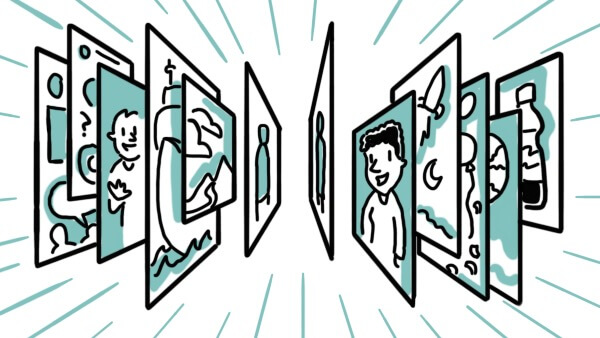More and more organizations recognize the value of visual storytelling in their marketing, communications, and other functions. Increased use of the approach has led to the emergence of some very interesting trends. As with any style or mode of work, the proliferation of the practice has led to variation and individualization.
Today, we’re looking not at defining visual storytelling or how to start using visual storytelling in your organization. We’re looking directly at the cutting-edge trends in visual storytelling, and the specific kinds of visual storytelling that current practitioners favor.
The Never-Ending Story
Mark Westall identifies the social media-driven trend of the unending story as one of the most popular trends in visual storytelling. The unending story tends to “occur in real time and will happen every day of the week”. A perfect example of this are social media accounts that post stories on a daily basis. They are consistently drawing in people looking for compelling narratives that are not meant to come to an end.
Westall brings a worthy addition to this discussion with his comparison to cinema and television’s love of creating sequels and reboots. These reboots often easier to create in terms of copyright issues. They also “allow the movie studios to continue making profits even years after production”. Thus, even movies, with their typically constrained run time, have joined the trend of the unending story.
While unending stories differ from the conventional story structure by removing the “end” of the story, another trend differs in its subject matter. Unlike stories—even unending ones—that come from influencers and brands, stories being sourced directly from customers are all about authenticity.
Customer-Led Storytelling
Customer-led storytelling lets the consumer propel marketing initiatives. This tends to come across as relatable. It can help shape the brand as one that’s truly focused on its customers, not purely its own profit. A visual story that simply tells its viewer that “This product is better than others” tends to feel heavy-handed. Compare that to one that features someone who shares the viewer’s concerns, lifestyle, and/or goals. One that tells its viewers “This product really helped me.”
Hyperreality
The trend of hyperreality showcases the role of new technology in visual storytelling. Augmented and virtual reality platforms have opened the door for visual storytelling that is more than just viewable. A multisensory experience in storytelling brings authenticity to your visual story. A somewhat ironic outcome, given the simulated nature of the experience and the high amount of technical equipment and processes needed to create it.
The novel nature of hyperreal experiences, however, can make them more limited in availability and accessibility. There aren’t as many “rules” to creating a successful visual story in virtual reality as there are, say, in film.
Moreover, the technology has yet to become standardized, leaving many virtual reality creators struggling to find common ground on hardware, software, and more. Thus, virtual reality might not be the easiest trend to join today, but keep an eye out. Hyperreality is on the rise.
Live-Streaming
A trend that aims for a similar kind of authenticity as hyperreality, but is more readily accessible to visual storytellers today is live broadcasting. Live-streaming and other methods of real-time content broadcasting can show your brand to be ‘real’ in a media climate saturated with “fake… retouched, cut, edited, blended” content.
Not only does live broadcasting make your visual story seem less curated and calculated, it brings a useful informality. If the camera slips, or someone interrupts the shot, well, that’s the nature of shooting live. Not only will your audience likely forgive you, but they might also find your live broadcast more relatable and untouched. Of course, best practices would not be to encourage errors. But it is worth noting that this trend can overcome minor problems with ease.
Get Small
Mini-ads are a fascinating trend in visual storytelling that responds to the decreasing effectiveness of traditional advertising. With 6-second visual stories, brands get a condensed visual message to be shown, say, on Facebook. It’s a great way to make a small amount (and size) of content, but drive large amounts of engagement. Given audiences’ ever-shrinking attention spans, this is a visual storytelling trend that’s particularly safe. It’s hard to lose the attention of your audience in six seconds, unlike with a three-minute video.
Authenticity Wins
If there’s one way to sum up current trends in visual storytelling, it’s audience desire for authenticity. Even in an example like virtual reality, where participants are well-aware that the experience is artificial, realism and authenticity are the goal. Viewers engage with material that’s less direct and pushy in its sales efforts. They attach to visual stories that feel relatable and human.
From highly-relatable trends like live-broadcasting and customer-sourced stories to more esoteric ones like hyperreality, the way of the future is the way of the real—or at least, the convincingly real.
Has your visual storytelling followed one or more of these trends—perhaps even without you realizing it? Which trends do you think will have the most staying power, and which may not? Do you see value in the central idea of authenticity in visual storytelling, or do you think this focus, in itself, is merely a trend? How might you craft an authentic visual story?

